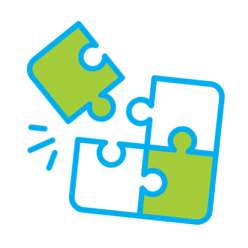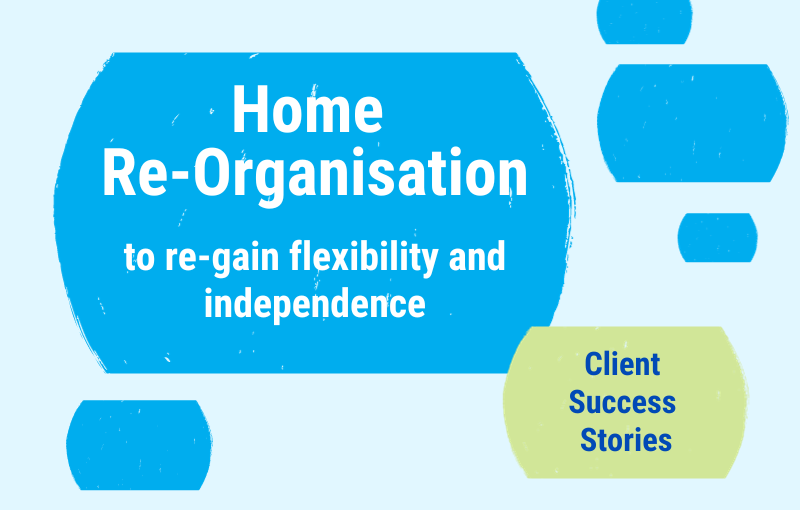If your physical fitness and capabilities change, a re-organisation at home can help you to re-gain flexibility and independence.
CLIENT STORY
Getting older is not always an easy job! – It can be hard, for example, to accept and manage changes in physical fitness levels.
Ellie had all her life been very independent and active.
She had invested her energy into her professional career and had been very successful in her job – which was quite untypical for a woman of her generation.
She also had many different leisure interests and a vivid social life – which helped her to continue her active lifestyle when she retired many years ago.
Now in her early eighties, Ellie no longer was agile and active: after her fall from the stepladder she had to spend some weeks in hospital, and now, back at home, she suffered from pain in her hip, and could only move around very slowly. She couldn’t do her shopping any longer, and couldn’t do all the housework on her own.
She had become so depressed and inactive that her niece worried a lot about her aunt and wondered how she could help her feel better again. She called me for help.
At my first meeting with Ellie, we talked a lot about her past, and I got fascinated by the active life she had had! Listening to her lively stories, I could easily understand why her friends had always called her ‘Running-Ellie’.
A bit further on in our conversation, we realised that this actually was the root of her problem (and her depression): Elie couldn’t ‘run’ any longer, she felt no longer independent and active – she felt like having lost her personality.
How could we re-organise Ellie’s place in a way that would allow her to move around easier again and make her able to get her housework done on her own?
How discarding and re-arranging furniture can bring back mobility and flexibility
First –Ellie had agreed on a reduction of her furniture – we took out what stood in her way: two coffee tables, a sofa, and 4 big armchairs from the living room, two chairs and a dresser from her bedroom, and a huge plastic table from her balcony. We also removed any loose rugs and carpets from all rooms.
This was a great improvement because now Mrs. Ellie could use her (wheeled) walker to move easily and safely around her apartment. What she did!
How re-organising all possessions can make them accessible again
At our next meeting, we talked about how Ellie had spent her days before the stepladder accident happened. We also walked together through all her rooms to find out where she used to spend most of her time, what she did in those rooms, and which cupboards, wardrobes, shelves, etc. contained her mostly used household and hobby items.
Ellie didn’t want to give away any of her belongings – she felt she would lose even more of her past life (which she missed so much) if she would discard the things that related to it.
Thus, we didn’t throw anything away but we took everything out so that we could re-arrange all her possessions. Ellie sorted them into two categories: ‘Used on a daily basis’ and ‘Rarely used/sentimental’.
She could no longer reach out to anything that was placed higher than her shoulders’ level or lower than the height of her waist.
That’s why we sorted the items from the ‘daily-use-category’ only into those drawers, cupboards, shelves, etc. which had the right height.
Finally, we arranged all rarely or never-used items in the remaining storage spaces.
I visited Ellie some weeks later again, and she told me with a lot of excitement about her ‘new’ life: how agile and active she felt, how often she invited friends to come over for coffee and self-made cakes, and how much time she spend with her crafts and other hobbies.
She had even started thinking about giving away some of her belongings which she no longer used!

